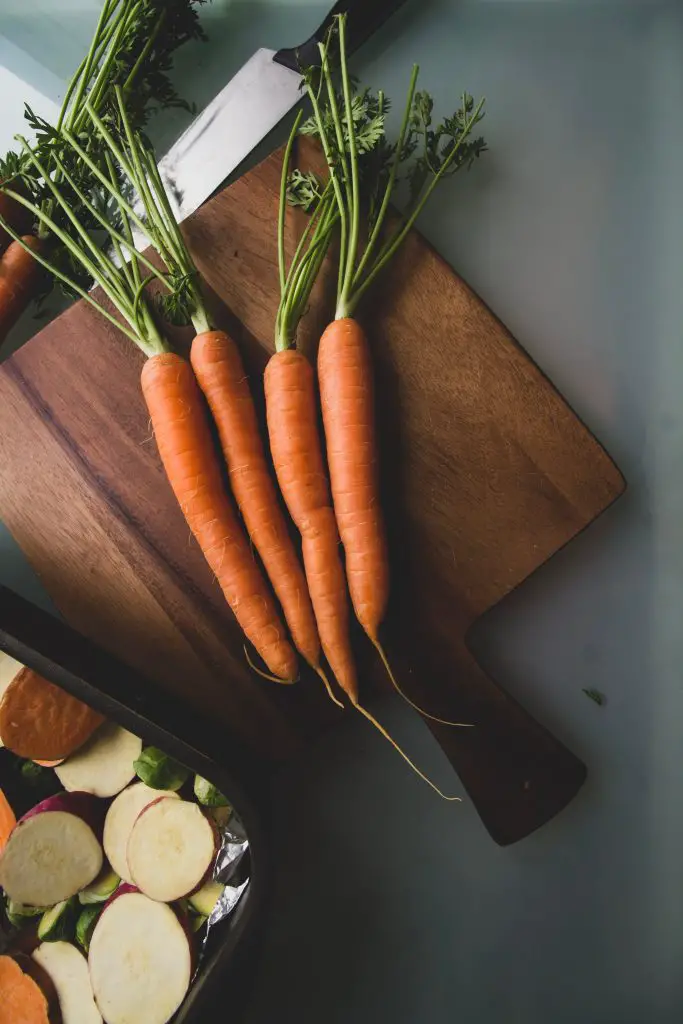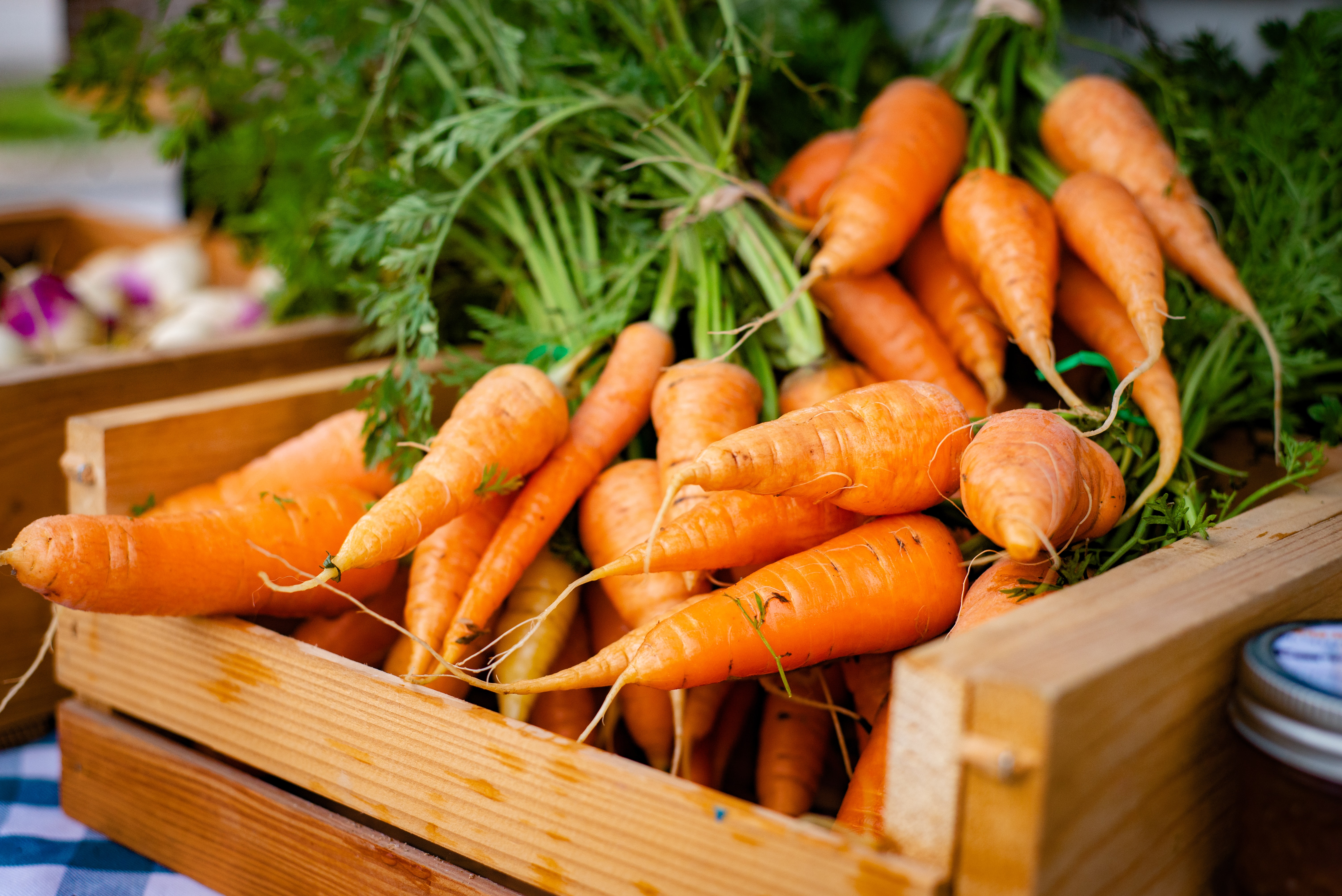How Long Does It Take For Carrots Seeds To Germinate? Carrots are one of the most widely eaten vegetables in the world and they’re frequently grown in vegetable gardens at home. However, carrots are considered a relatively difficult vegetable to grow because they have proven sometimes to be difficult to germinate, however, how long do they actually take to come up?
Carrots will take approximately 7 to 10 days to germinate at temperatures of 59°F to 86°F (15 to 30°C) according to a study published by the University of California. However, the rate of germination is significantly affected when the temperature falls lower than 50°F (10°C). A table showing the speed of germination is provided below for reference.
| Days To Germinate | Temperature (°F) | Temperature (°C) |
| – | 32 | 0 |
| 50.6 | 41 | 5 |
| 17.3 | 50 | 10 |
| 10.1 | 59 | 15 |
| 6.9 | 68 | 20 |
| 6.2 | 77 | 25 |
| 6.0 | 86 | 30 |
| 8.6 | 95 | 35 |
| – | 104 | 40 |
However, many people have difficulty germinating carrot seeds not because of temperature but rather due to the amount of moisture that the seed is exposed to which has resulted in them having a bad reputation in terms of germination.
One of the reasons this occurs is because carrots are extremely small seeds that are generally sown directly into the soil because they produce a taproot which is easily disturbed during transplantation.
Due to the size of the seed, they tend to be planted in very shallow furrows which can dry out extremely quickly. This means that in warmer temperatures the seeds dry out too quickly to allow germination to occur in many cases. This means that the carrots either do not germinate or germinate after a period of time when there is enough natural rainfall to create suitable conditions for germination.

How To Ensure That Your Carrot Seeds Germinate Every Time
There are several methods that are frequently used to ensure that the carrot seeds germinate first time every time. The simplest method when you are sowing directly is to avoid the hotter parts of the year where seeds are going to be exposed to relatively high temperatures during the day.
This means that the best time to plant is around the time of the last frost as this will ensure that the temperatures are sufficiently high to enable germination to occur but not too hot for the seeds to dry out rapidly. Additionally, to reduce the chances of loss of moisture it is best to pre-water the furrows before sowing the seeds.
And then once the seeds are sown water them again thoroughly to ensure that the soil is absolutely saturated. To further increase your chances many gardeners also presoak the seeds which helps in some cases to accelerate the rate of germination.

The other method which is commonly used is to pre germinate the seeds before they are planted. This is typically done by germinating the seeds on a moist towel before planting the seeds in the ground.
The easiest way to do this is to soak this paper towel in water and then ring it out so that the towel is moist but not sodden. The towel should then be placed into a Tupperware container before the seeds are sprinkled out along the surface. The container can then be sealed and left for 5 to 7 days indoors. This is usually sufficient to ensure that the seeds germinate.
However, to make it easier to transfer the seeds from the paper towel to the garden it is generally easier to sow the seeds in straight lines on the paper towel and then slit the paper towel into long strips. These strips can then be picked up and placed directly into the planting furrows in a similar manner to how seed planting tapes are used.
The seeds can then be covered over as per normal and grown on as the paper towel will not interfere with the growth of the carrots as it will disintegrate over time.

The last method that is also used is to simply sow the carrot seeds in a flat open seed tray in lines. To ensure that the seed tray remains moist it can be placed into a shallow tray of water to ensure it never dries out. Once the carrots germinate a trowel can be used to pick up entire lines of carrots and directly transfer them to pre-dug furrow.
This process is quick and easy to implement however it has one distinct disadvantage which is that if the carrot seeds are left to mature too long the taproot can be disturbed which can mean that you will get a few wonky looking carrots however they will still taste the same.
Caring For Carrots
Once you have successfully germinated the carrots they generally require very little maintenance other than to ensure that they are watered frequently and not allowed to dry out. If the watering is inconsistent you can get cracking of the roots which will reduce the quality of your produce.
As most gardeners tend to plant carrot seeds too close together it is generally necessary to thin the carrots by taking an early harvest of baby carrots. However, if you live in an area where there is carrot fly present then you will need to protect your crops.
To do this all it is necessary is to erect a fine netting that is approximately 3 ft tall around your carrot bed. The netting does not need to completely cover the carrots at the top as carrot fly only flies are small distance above the ground so as long as the sides of the protections are sufficiently tall this will be enough to keep the current fly out.

Harvesting Carrots
Generally, carrots can be harvested at almost any stage however to get a reasonable feed you do need to wait until they have a sufficient diameter. If you need to check the diameter the easiest way is to simply uncover the top of some of the carrots as that will give you an idea of the size of the carrots underground.
However, you can leave the carrots in the ground to grow for an extended period of time without a problem and just pick them as you need them. The only exception to this is if you live in an area where the ground freezes solid as this can mean that the carrots are extremely difficult to remove from the ground.
In these cases, it is best to remove the carrots and store them and damp sand in a cool dark location as this will mimic the conditions in the ground and ensure that they remain in good condition until you are ready to use them for months on end.
I hope you found this article useful and have great success growing your carrots at home, if you have any additional comments or questions please leave them in the section below.
Relevant Articles
Can You Replant Carrots That Have Been Pulled Too Early?
How Deep Do Carrots Grow? Does The Type Matter?
Are Green Carrots Safe To Eat? What Can I Do To Stop Them From Turning Green?
